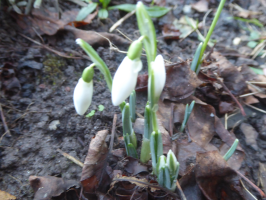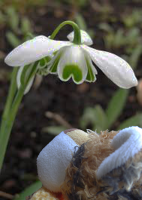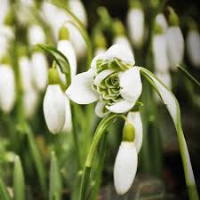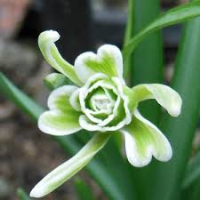Snowdrops
Snowdrops In The Garden
A Read-Along Activity
The bears had noticed what looked like some tiny, white flowers beginning to grow in the garden border. They have been wondering what they could be but have had to wait for the weather to brighten up just a bit so that they could get out into the garden to check them out.
Today, the sun shone and although it wasn't raining (or snowing!) it was still a little chilly. So they put on their scarves and ran outside to see what the white flowers were.

Boo reached them first. "Look - here are those lovely white flowers," he called. "I think they are snowdrops," he said. "Yes they are," said Henry, who was a bit of an expert when it came to flowers. "We planted these two years ago under this lilac tree, but they seem to have spread out a lot."
Snowdrops are a woodland plant so don't mind growing in partial shade so they are suitable for under-planting among trees and shrubs.

Snowdrops have delicate white flowers but, if you very carefully lift up their heads, you will see that the insides of the flowers are prettily marked with green stripes and dots and other patterns.

When grown in large masses, the combined fragrance perfumes the air. The leaves are straplike or grassy, appearing with the flowers and fading away in late spring.
There are 75 different species and more than 2,500 varieties of Snowdrops. They are all white. The most popular has a Latin name of Galanthus nivalis, more easily known as the Garden Snowdrop. Its Latin name means "milk flower of the snow".

Because it is the first flower to bloom at the end of winter and the beginning of spring, it symbolizes hope. The bears were certainly cheered up by seeing such lovely flowers at last beginning to grow again in their garden.
Have a look around your garden to see if you have any snowdrops blooming, or go to your local Park or woodland and look there.
